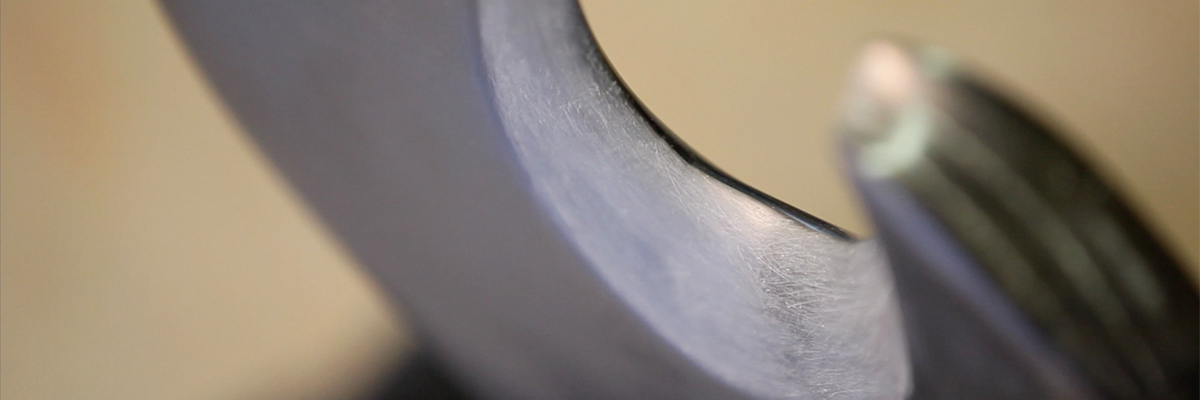
The Varvat oxymoron:
Light, engraved in marble
From two lines, one straight and one curved, Picasso would depict languid women. Rays of light and the ridges of his marble sculptures are what give Varvat’s work abounding signification, and precisely because the shapes do not mean anything – at least nothing discernable, but instead, impressions, such as balance, energy, instability, momentum, hope, surprise. Contemplating one side of a sculpture created from direct carving reveals absolutely nothing of the other side of the piece. To find out, the spectator must actively explore the artwork. The meaning of Varvat’s sculptures, like the meaning of life, cannot be grasped in just a glance.Marc Pavageau, psychanalyst
Bernard Varvat, beyond sculpture…
Varvat’s art isn’t so much sculpting as it is navigating through space...His mind is constantly at work, oscillating between poetry and science… He fuses mathematics and geometry into the not-so unconquerable chunks of raw asteroidal matter… The creation process is time-consuming, but Varvat’s justification points to the demanding nature of the construction enterprise, and the tenaciousness of his sculpting material… Bernard Varvat’s work is a reminder that imagination knows no bounds for she or he who continues to engage in reverie. With the artist’s two feet on the ground, spectators of his work are elevated up to the skies.
Mathias Duhamel, painter and musician
Bernard Varvat & the very essence of things
...Bernard Varvat sculpts exclusively out of marble – many different colours of marble from all over the world: Belgian Black, White Carrara, Red Languedoc, Indian Green, Egyptian Yellow, etc. In Varvat’s own words, marble has “the most adversity”, and it is by working against the complexity of such adversity that the artist achieves “the strongest feeling of fulfilment”. Paradox triggers emotion. Through strength and assertiveness, Bernard Varvat appropriates the material until self-expression reaches a climax – a moment of grace when the sculptor’s mind fills with serenity, and his work, a fusion of rigour and sensuality, reveals only the very essence of things. November 2012Francis Parent, art critique & AICA member
Bernard Varvat
Varvat uses direct carving. A few drawings and miniatures, often made out of clay, are the models that guide his hands and clear his mind of futile worries. The direct carving technique gives the artist much freedom to express himself, but requires an equal amount of energy, and flawless technique. The sculptor jeopardises his piece with every movement he makes; dexterity, a clear mind, and a confident gesture are crucial… Following in the footsteps of great 20th century masters, simple shapes and volume form the basis of Bernard Varvat’s work… However, such simplicity is illusory. For if you explore further and sail along the curves, through the contrasts of shadow and light, you will no doubt discover several master pieces in each of Varvat’s sculptures…Charlotte Delannoy, art critique